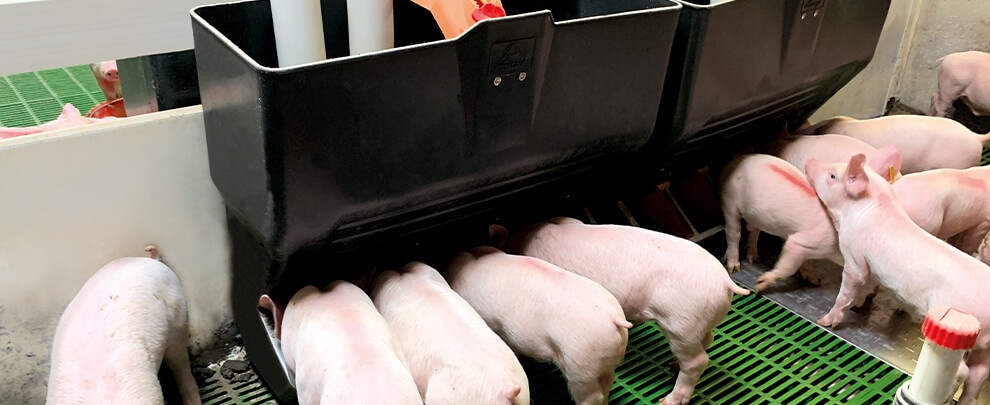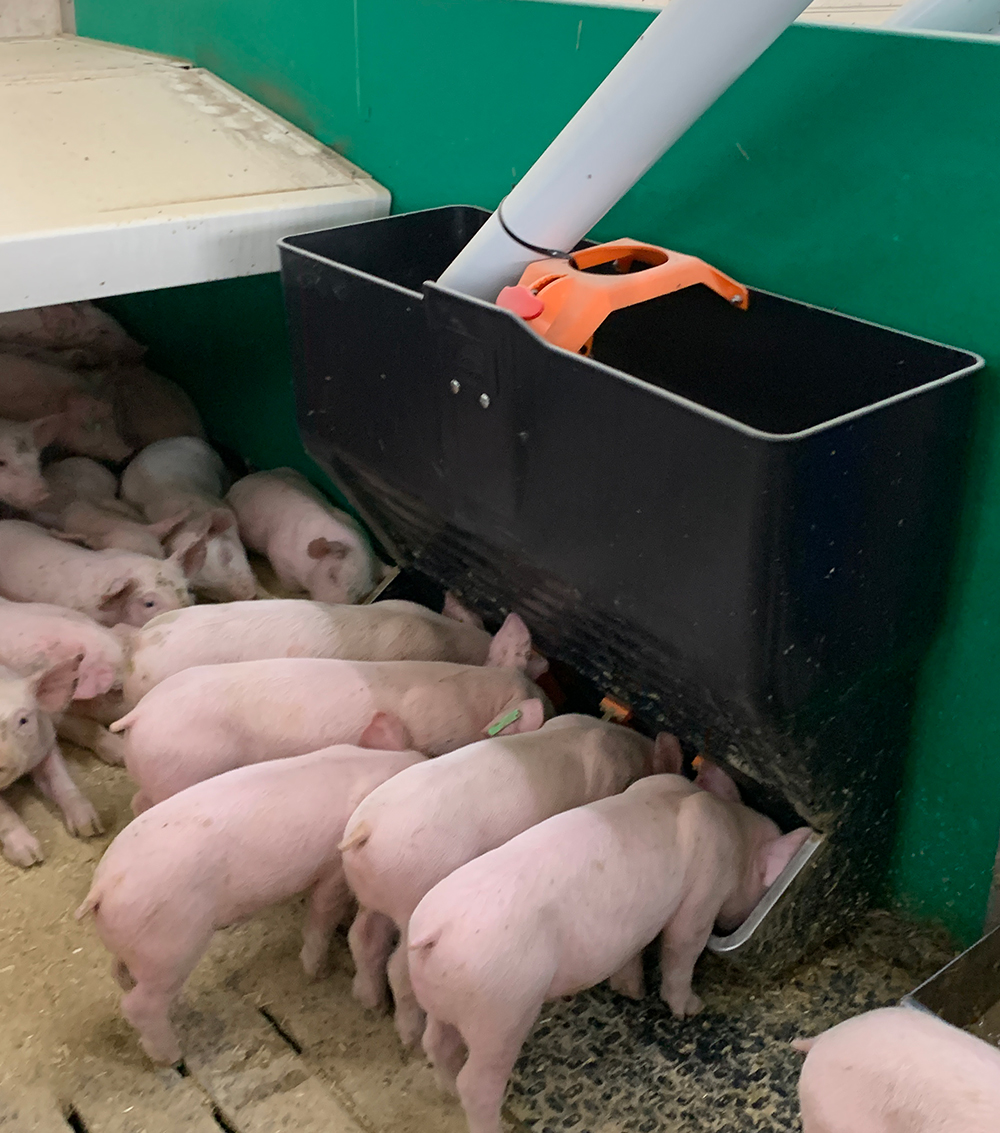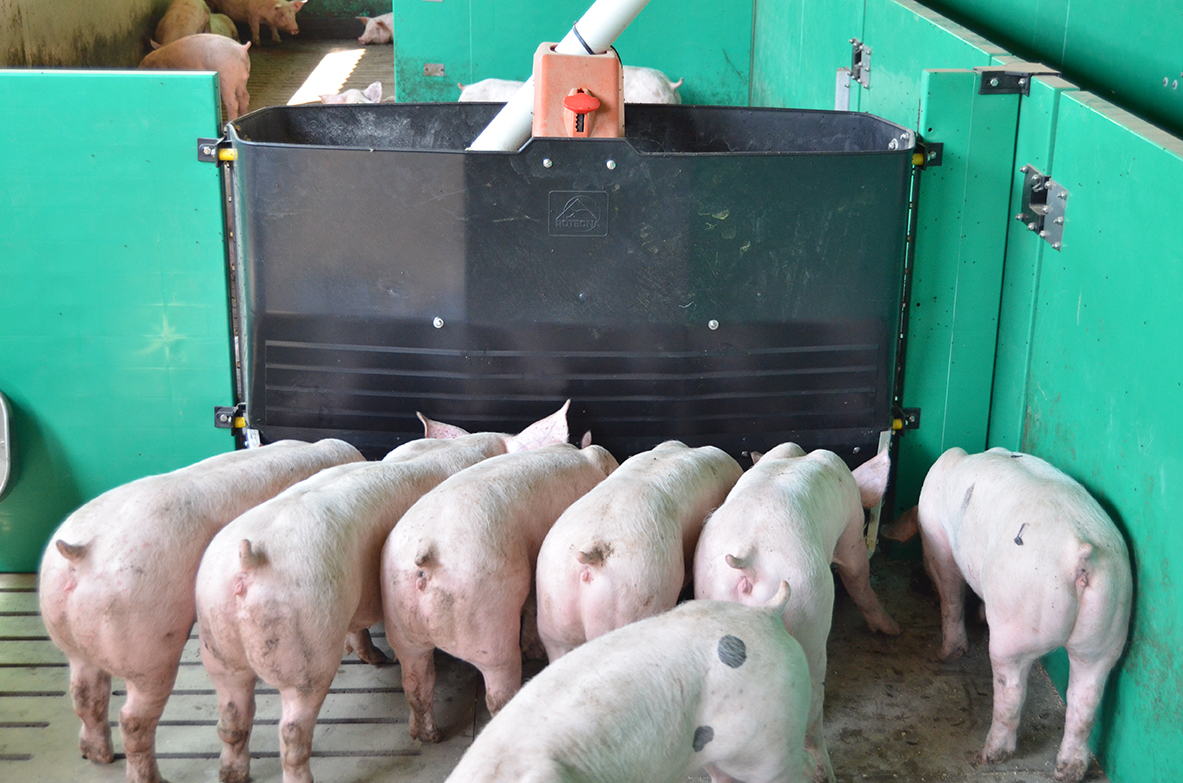Blog
Blog

Keys to improve feeding management at weaning and fattening
03 of May of 22 - News
There are different feeding systems on the market. Regardless of which one is used, the objective is always the same: to satisfy the feeding needs of the animals with the minimum feed waste and a good conversion rate. Feed represents between 65% and 70% of the production costs of a farm, so it is very important to optimize its management to the maximum with feeding systems capable of facilitating precise and efficient handling that allow the animals to eat placidly without wasting feed. It is at this point that the feeder models with which we work, their regulation system, capacity and accessibility will influence the results of a farm.
However, before deciding what equipment to install in our facilities, we must take into account that the options for managing feed on farms are very varied and depend on several factors, such as the existing trends in the market in which it is located, the farm, the climate of the territory, the type of facilities available, spaces, types of pens, management preferences of the rancher, etc.
In order to respond to the needs of those farmers who are committed to dry feeding after the adaptation of the animals at weaning and throughout the fattening phase, Rotecna has two feeders with great success among farmers: the TR5 (weaning) and TR3D (fattening).
WEANING
The weaning phase is key for a farm, among other reasons, because the piglet must adapt to a new diet, environment and companions. The final economic results will depend on the good management of this phase and food is one of the most outstanding challenges. From a nutritional point of view, the weaning phase significantly affects the piglet, basically because it goes from a liquid feed to a solid feed, which must be managed in order to avoid digestive problems. For this reason, it is just as important to choose the right food during the weaning phase as it is to provide adequate material for its handling. It is about having the animals eat and eat well.
After its launch in 1999, thousands of farmers around the world have opted for TR5 feeder, making it the best dry option for weaning. Its easy handling with a precise scraper regulation system, allows regulation with the hopper full of feed and easy sliding of the feed inside, as there are no obstacles or closed angles.

TR5 installed on farm. Photo: Rotecna.
Constructed entirely of plastic and without corners, it is very resistant and facilitates cleaning tasks, which guarantees optimal hygiene and health conditions in the weaning pens. Both are essential conditions during this phase when the piglet is more susceptible to diseases.
FATTENING
If we move forward in the production cycle, in the fattening phase, feeding represents more than 70% of the costs, which is why the choice of feed, the handling and the control that is going to be carried out on the production take on even more importance. supply and the model of equipment with which you are going to work. In markets with growing pig production, where large-capacity pens are used, having a feeding system capable of supplying a large number of pigs per pen is an existing need.
In response to this need, Rotecna's TR3D, three-mouth, double-sided feeder is the best option. With a capacity of 330 litres, it can feed up to 66 animals. In addition, the V-shaped design of the lateral mouths, so that the animals can be placed diagonally, allows them to eat placidly without disturbing each other, thus avoiding fights and wasting feed.

TR3 installed on farm. Photo: Rotecna.
On the other hand, the use of a non-porous material such as plastic improves hygiene and disinfection levels, thus reducing water consumption and the time that the farmer spends on cleaning tasks, and a better result is guaranteed. , with the benefits that this entails from the sanitary and animal health point of view.
Finally, in terms of handling, the scraper regulation system facilitates the handling of the hopper even when full. Precisely, one of the main advantages of this fattening hopper model is that it allows the farmer to accurately and independently regulate each of the sides of the TR3D, a very useful feature when working with pigs of different sizes, with a different number of animals per pen, or when you want to fast to one side.






